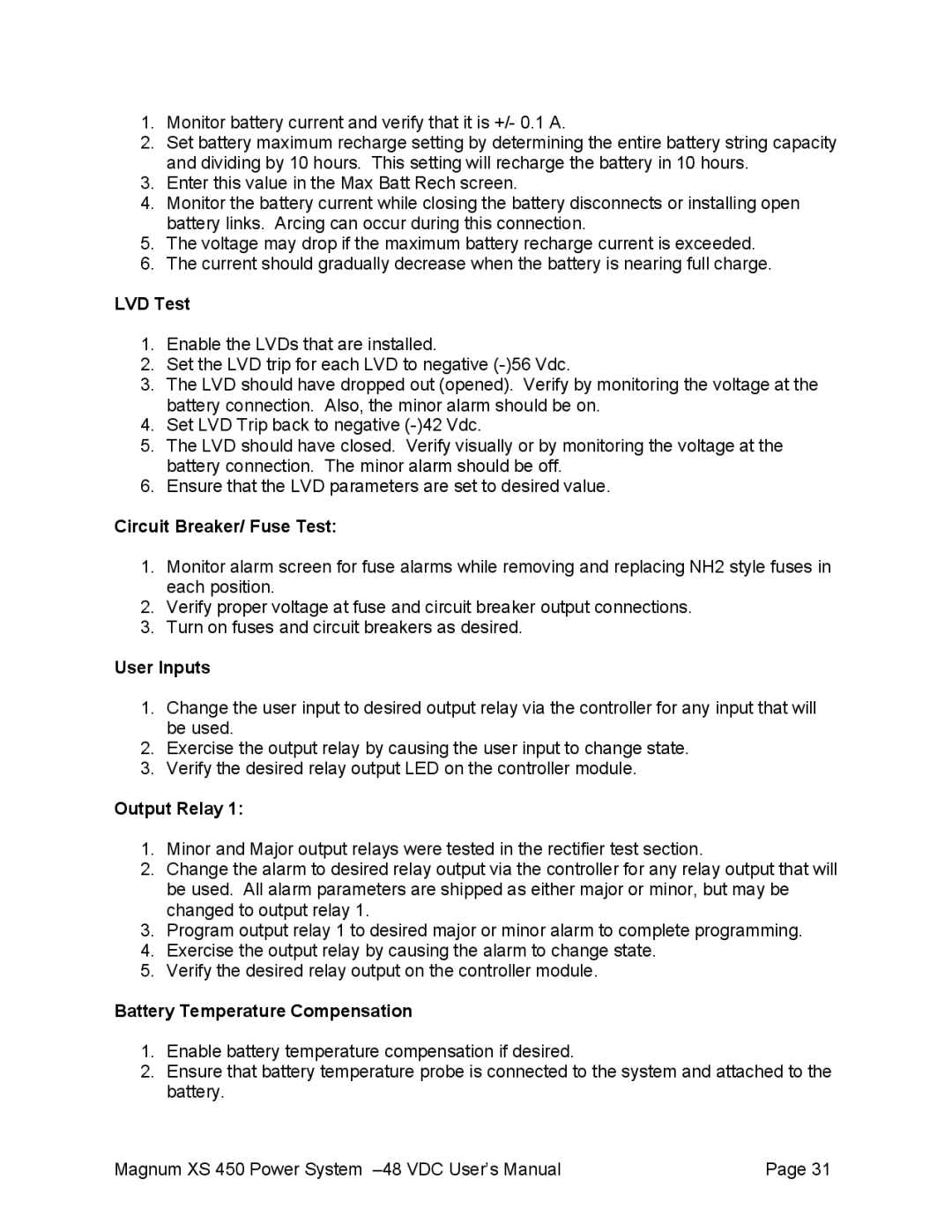XS 450 -48 specifications
The American Power Conversion (APC) XS 450 -48 is a reliable and efficient power supply solution designed for critical applications requiring a consistent and stable power source. This solution is particularly beneficial for telecommunications, data centers, and industrial settings where power reliability is paramount.One of the key features of the XS 450 -48 is its ability to deliver 450 watts of continuous power, ensuring that connected devices receive uninterrupted power supply. Its 48-volt output makes it ideal for telecom requirements, where 48V systems are standard. The unit provides a compact and space-saving design, making it suitable for installation in rack-mounted configurations, optimizing the utilization of valuable real estate in server rooms or equipment racks.
The XS 450 -48 utilizes advanced technologies that enhance its performance and reliability. It is equipped with an active power factor correction (PFC) system that significantly reduces harmonic distortion. This feature not only improves system efficiency but also complies with various regulations concerning power quality. Additionally, the power supply includes built-in over-voltage protection, over-current protection, and short-circuit protection, ensuring that both the power supply and the connected devices are safeguarded against electrical faults.
The unit is designed for high efficiency, often exceeding 90% under full load conditions. This not only reduces energy costs but also minimizes heat generation, contributing to a quieter operation environment. The XS 450 -48's intelligent thermal management system allows it to operate in a range of temperatures, making it highly versatile and adaptable to varying environmental conditions.
Furthermore, monitoring and management capabilities are integrated into the XS 450 -48 with optional external monitoring systems. These systems provide critical insights, allowing technicians to track real-time performance metrics, detect potential issues early on, and perform preventive maintenance.
In conclusion, the American Power Conversion XS 450 -48 stands out as a robust power supply solution that combines reliable performance, advanced protection features, and high efficiency. Its design caters to the specific needs of telecommunications and data centers, making it an indispensable asset for maintaining the uptime and integrity of critical systems. With its range of features and reliability, the XS 450 -48 continues to be a preferred choice among professionals in the field.
